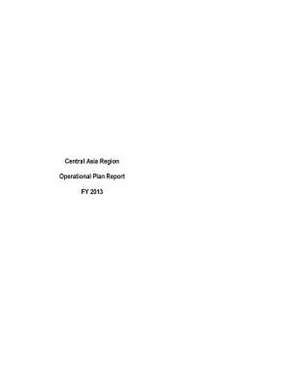Central Asia Region Operational Plan Report Fy 2013
Autor United States Department of Stateen Limba Engleză Paperback
Preț: 137.67 lei
Nou
Puncte Express: 207
Preț estimativ în valută:
26.35€ • 27.43$ • 22.27£
26.35€ • 27.43$ • 22.27£
Carte disponibilă
Livrare economică 17 februarie-03 martie
Preluare comenzi: 021 569.72.76
Specificații
ISBN-13: 9781503193086
ISBN-10: 150319308X
Pagini: 178
Dimensiuni: 216 x 279 x 10 mm
Greutate: 0.43 kg
Editura: CREATESPACE
ISBN-10: 150319308X
Pagini: 178
Dimensiuni: 216 x 279 x 10 mm
Greutate: 0.43 kg
Editura: CREATESPACE
